#best international university in india
Text
Attending a Leading Global University in India
n the ever-changing field of higher education in India, there is a single institution that shines as a representation of academic brilliance and international involvement. Acknowledged as one of the top global universities in India, this renowned school embraces students from around the globe, providing unmatched chances for development, education, and discovery. This extensive manual will examine the enrollment procedure for overseas students in India, investigating why attending this esteemed establishment is a rewarding opportunity for global learners.
Discovering the Best International University in India
As aspiring scholars seek to broaden their horizons and pursue quality education, the quest for the best international university in India leads them to a distinguished institution known for its commitment to excellence and innovation. Renowned for its world-class faculty, state-of-the-art facilities, and vibrant campus life, this institution offers a transformative educational experience that prepares students to thrive in an increasingly interconnected world.
Admission for Foreign Students in India
For foreign students aspiring to study in India, gaining admission to a prestigious institution is a pivotal step in their academic journey. With a dedicated focus on promoting diversity and inclusivity, this top international university in India opens its doors to talented individuals from across the globe, offering a seamless admission process tailored to meet the unique needs of international students.
Streamlined Admission Process
At this esteemed institution, the admission process for foreign students in India is designed to be transparent, efficient, and accessible. Through the dedicated efforts of the Symbiosis Centre for International Education (SCIE), the central department responsible for facilitating admissions for international students, aspiring scholars receive personalized guidance and support at every stage of the application process.
Comprehensive Support Services
Recognizing the diverse backgrounds and cultural experiences of its international student community, this top international university in India provides comprehensive support services to ensure a smooth transition and successful integration into campus life. From assistance with visa documentation to orientation programs and academic counseling, SCIE is committed to nurturing a welcoming and inclusive environment for all foreign students.
Study in India for Foreign Students
As foreign students embark on their educational journey in India, they are greeted with a vibrant tapestry of cultures, traditions, and academic pursuits. From the bustling streets of metropolitan cities to the serene landscapes of campus campuses, studying in India offers a unique blend of academic rigor, cultural immersion, and personal growth opportunities.
Academic Excellence Across Disciplines
At this top international university in India, students have access to a diverse range of academic programs spanning multiple disciplines, including engineering, business, humanities, and sciences. With a focus on experiential learning, research-driven curriculum, and industry collaborations, students are equipped with the knowledge, skills, and experiences needed to excel in their chosen fields.
Cultural Enrichment and Global Perspectives
Studying in India provides foreign students with invaluable opportunities to immerse themselves in a rich tapestry of cultures, traditions, and perspectives. From participating in cultural festivals and community service projects to engaging in cross-cultural dialogues and exchange programs, students gain a deeper understanding of the world around them and develop a global mindset that transcends borders.
Conclusion: Enriching Lives
Aspiring scholars seeking a transformative educational experience need look no further than this top international university in India. With its unwavering commitment to academic excellence, cultural diversity, and global engagement, this esteemed institution provides foreign students with a supportive and enriching environment in which to pursue their academic and personal goals. Through its streamlined admission process, comprehensive support services, and vibrant campus life, studying at this top international university in India opens doors to a world of opportunities and possibilities.
#best international university in india#study in india for foreign students#study abroad in india#best ug courses in india
0 notes
Text
Looking for an Interior Design course in Kolkata? Explore top institutes offering comprehensive courses. Learn from industry experts and kickstart your career in interior design. Enroll now.
#top interior design university in kolkata#best interior design college in kolkata#interior design colleges in india#amity international university
0 notes
Text
Which Is The Best University for MBA - International Business In North India ?
When it comes to pursuing an MBA in International Business in North India, Geeta University(GU), part of Geeta Group of Institutions, is one of the best private universities for the course. The MBA in International Business program at GU is designed to provide students with a deep understanding of the global business environment and equip them with the skills necessary to succeed in international markets.
The course curriculum at GU includes a wide range of subjects such as international trade, global marketing, cross-cultural management, international finance, and supply chain management. The program also offers students opportunities to participate in international exchange programs and internships with leading companies in the field.
Apart from the curriculum, GU has several other factors that make it one of the best private universities for MBA in International Business in North India. Here are some of the key features of the university:
1 Experienced Faculty: GU has a team of highly qualified and experienced faculty members who are experts in their respective fields. They have a deep understanding of the global business environment and are dedicated to providing students with the best possible education.
2 Industry-Relevant Curriculum: The course curriculum at GU is designed to be industry-relevant and focuses on the practical aspects of international business. This helps students to gain the necessary skills and knowledge required to succeed in the global business environment.
3 International Exchange Programs: GU has tie-ups with several leading universities around the world, which provide students with opportunities to participate in international exchange programs. This enables students to gain exposure to different cultures and business practices, which is essential for succeeding in the global business environment.
4 Internship Opportunities: GU has tie-ups with several leading companies in the field of international business, which provide students with opportunities to gain hands-on experience through internships. This helps students to develop practical skills and enhances their employability.
5 State-of-the-art Infrastructure: GU has a state-of-the-art infrastructure, which includes well-equipped classrooms, modern labs, a well-stocked library, and sports facilities. This provides students with a conducive environment for learning and helps them to excel in their studies.
6 Placement Support: GU has a dedicated placement cell, which provides students with placement support and assists them in securing jobs in leading companies in the field of international business. The university has a track record of placing its students in some of the top companies in the country.
In conclusion, if you are looking to pursue an MBA in International Business in North India, Geeta University (GU) is one of the best private universities for the course. The university has an experienced faculty, an industry-relevant curriculum, international exchange programs, internship opportunities, state-of-the-art infrastructure, and placement support. These factors make GIMT an excellent choice for students who want to succeed in the global business environment.
#MBA in International Business#geeta university#Which Is The Best University for MBA - International Business In North India ?
0 notes
Text
The Best News of Last Week - March 18
1. FDA to Finally Outlaw Soda Ingredient Prohibited Around The World

An ingredient once commonly used in citrus-flavored sodas to keep the tangy taste mixed thoroughly through the beverage could finally be banned for good across the US. BVO, or brominated vegetable oil, is already banned in many countries, including India, Japan, and nations of the European Union, and was outlawed in the state of California in October 2022.
2. AI makes breakthrough discovery in battle to cure prostate cancer

Scientists have used AI to reveal a new form of aggressive prostate cancer which could revolutionise how the disease is diagnosed and treated.
A Cancer Research UK-funded study found prostate cancer, which affects one in eight men in their lifetime, includes two subtypes. It is hoped the findings could save thousands of lives in future and revolutionise how the cancer is diagnosed and treated.
3. “Inverse vaccine” shows potential to treat multiple sclerosis and other autoimmune diseases

A new type of vaccine developed by researchers at the University of Chicago’s Pritzker School of Molecular Engineering (PME) has shown in the lab setting that it can completely reverse autoimmune diseases like multiple sclerosis and type 1 diabetes — all without shutting down the rest of the immune system.
4. Paris 2024 Olympics makes history with unprecedented full gender parity
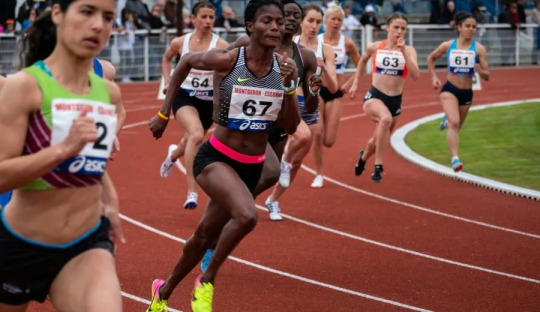
In a historic move, the International Olympic Committee (IOC) has distributed equal quotas for female and male athletes for the upcoming Olympic Games in Paris 2024. It is the first time The Olympics will have full gender parity and is a significant milestone in the pursuit of equal representation and opportunities for women in sports.
Biased media coverage lead girls and boys to abandon sports.
5. Restored coral reefs can grow as fast as healthy reefs in just 4 years, new research shows
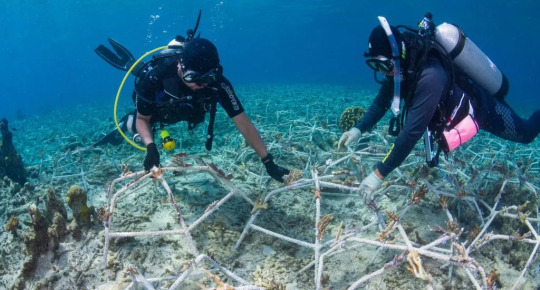
Planting new coral in degraded reefs can lead to rapid recovery – with restored reefs growing as fast as healthy reefs after just four years. Researchers studied these reefs to assess whether coral restoration can bring back the important ecosystem functions of a healthy reef.
“The speed of recovery we saw is incredible,” said lead author Dr Ines Lange, from the University of Exeter.
6. EU regulators pass the planet's first sweeping AI regulations
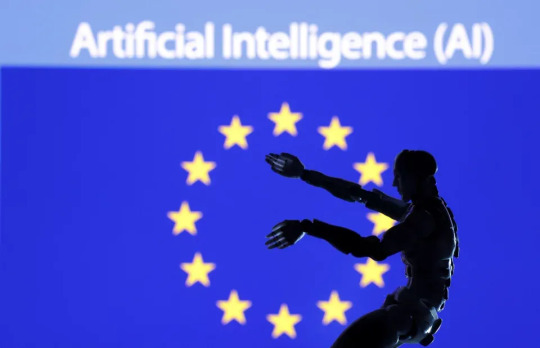
The EU is banning practices that it believes will threaten citizens' rights. "Biometric categorization systems based on sensitive characteristics" will be outlawed, as will the "untargeted scraping" of images of faces from CCTV footage and the web to create facial recognition databases.
Other applications that will be banned include social scoring; emotion recognition in schools and workplaces; and "AI that manipulates human behavior or exploits people’s vulnerabilities."
7. Global child deaths reach historic low in 2022 – UN report

The number of children who died before their fifth birthday has reached a historic low, dropping to 4.9 million in 2022.
The report reveals that more children are surviving today than ever before, with the global under-5 mortality rate declining by 51 per cent since 2000.
---
That's it for this week :)
This newsletter will always be free. If you liked this post you can support me with a small kofi donation here:
Buy me a coffee ❤️
Also don’t forget to reblog this post with your friends.
733 notes
·
View notes
Photo

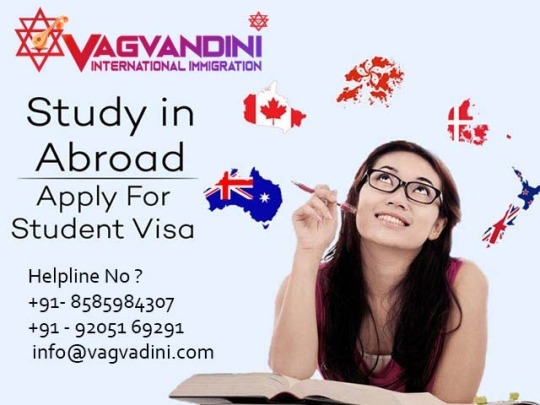







Best Distance Education University in India
#best distance education university in India#Distance Learning Education University in Delhi NCR#Domestic Educational courses in Delhi NCR#Domestic and International Education counsellor in Delhi NCR.#Visa Immigration Services In Delhi India#Best Solution B.tech MTech Graduation MBA courses#Best Medical courses in delhi NCR#Students Visa / Tourist Visa / Visitor Visa / Business Visa services#Study abroad services in India#International Educational courses in Delhi NCR
0 notes
Text
Top Ph.D in Fashion Design Colleges in India
Ph.D. in Fashion Design is a doctorate level course that allows students to study about fashion at the research level. To pursue research level studies in Fashion Design a students should have a Master’s Degree in Fashion Design Technology from any recognized Indian or Foreign University with minimum of 55% marks or equivalent grade point average.

Know More: Fashion Designing Courses
There are institutions across India that confer the PhD degree to students pursuing the programme in both full time and part time mode. Here the list of top institutes:
NIFT Delhi
NIFT Mumbai
NIFT Kolkata
Nirwan University, Jaipur
Mody University, Rajasthan
Amity University, Noida
The selection process to the programme is primarily done on the basis of Research Proposal and the Form submitted by the candidates during the time of admission. The shortlisted candidates will be called for final selection through presentation and personal interview.
Ph.D. in Fashion Technology aims to impart knowledge and carry research on the nature of fashion design, especially in the context where designers could contribute towards a more sustainable environment. The phD course should be taken up by highly professionals who want to conduct intensive and rigorous research in fashion.
The average annual fees for the programme shall be between INR 1 – 1.5 Lac, differing as per semester/annual pattern. Ph.D. in Fashion technology opens up avenues as professor and assistant professor, teachers in fashion institutes, colleges and universities. Additionally, they are employed as Fashion Consultants, Fashion Stylist, Freelancer, Merchandisers and Fashion Designers.
#Best University in Rajasthan#Best University in Jaipur#Best University For PhD In India#Best University For PhD In Fashion Technology#Best University For PhD In Rajasthan#University For Online PhD In India#Best PhD Colleges In India#Best University For PhD In Yoga#Best University For PhD In International Business#Best University For PhD In Home Science
0 notes
Text
this is really weak of me but I really do have to headcanon the Nations as having nothing to do with their governments and at times actively working against them because otherwise the atrocities are Not Fictional...
and anyway these beings hundreds of years old absolutely know that governments do not always have the people's best interests in mind. Do not always take care of the land. Nations believe their role is to take care of their land and their people, and maybe the older Nations tried to work with those in power in the beginning, but quickly learn their lesson.
because of this headcanon, I imagine the Nations all have 'departments' they belong to that focus on a certain issue. It would be impossible to have one individual try to have intimate knowledge of every single issue a country faces, and I love the implications this has on how much the Nations rely on each other, and how much their relationships are not reflective of human politics, because their purpose is not to reflect their people but to protect them and the land they're on.
SO finally, to the point of this post.
Here's what I think certain Nations do:
England and Russia are in charge of information gathering AKA espionage, as both have infiltrated their own governments at a very high level. Arthur is in MI6, Ivan is in the KGB-turned-FSK-turned-FSB. They're valuable assets to the rest of the world because they tend to have information on what everyone's governments are doing. Some other Nations who work in this department are Hungary, Philippines (F), Canada, Cuba, Ukraine, Scotland, Wales, Northern Ireland.
A lot of Nations work on environmental issues - Sweden, Finland and Denmark focus on governance as a way to mitigate environmental issues, while Australia, New Zealand, South Africa are focused on conservation, Brazil, Colombia, Congo focus on deforestation and air pollution, the Pacific Islands on rising sea levels and ocean pollution.
China, France, Ireland and Turkey are focused on food security - each one focuses on a specific aspect of it. China on availability, Ireland on access, France on utilisation and Turkey on stability.
Social welfare is headed by Austria and Belgium, with Spain, the Italies, Greece and Portugal focused on it.
Internal security is handled by the Germany brothers and Switzerland - this is the protection of the Nations themselves. Arranging identities, extraction of Nations who land themselves in trouble, and also the keeper of their arsenal.
America heads the research and development department that connects everything together - they develop the gadgets used by Arthur and Ivan's team, help develop technologies and conduct research focused on the environment and food security, help trial new ideas on addressing poverty, hack databases in order to help create identities for Nations. This department includes Japan, South Korea, India (F), Taiwan, Tony (not a Nation but heavily involved), Liechtenstein, Hong Kong, Belarus, Netherlands, Estonia, Mexico (F).
EDIT: I have to re-think a lot of this because I keep thinking about how very little countries there are compared to shit happening in the world and it messes with this universe a little bit. SO. WILL BE RE-WORKED.
#hetalia#aph#hetalia world series#hetalia world stars#hws england#hws america#aph america#aph england#too many people to tag#i think theres a lot of like TOPICS im missing that are relevant to nations#but its 1am this is the ones i thought of#the people i chose for each department are a mix of like#canons headcanons vague stats#also when i have an (f) next to someones name it means i headcanon them as ladies despite himaruya having them as men#✎#m: hetalia#hetalia: headcanon (au)#hetalia au: no government
43 notes
·
View notes
Photo





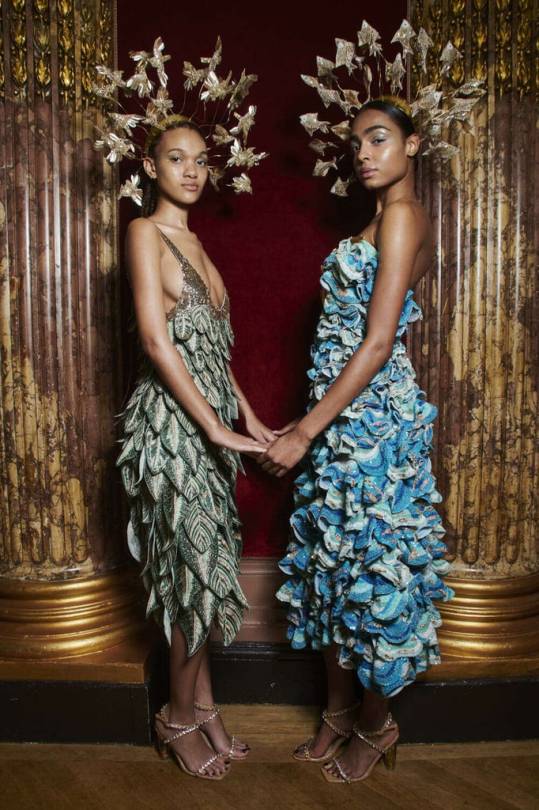

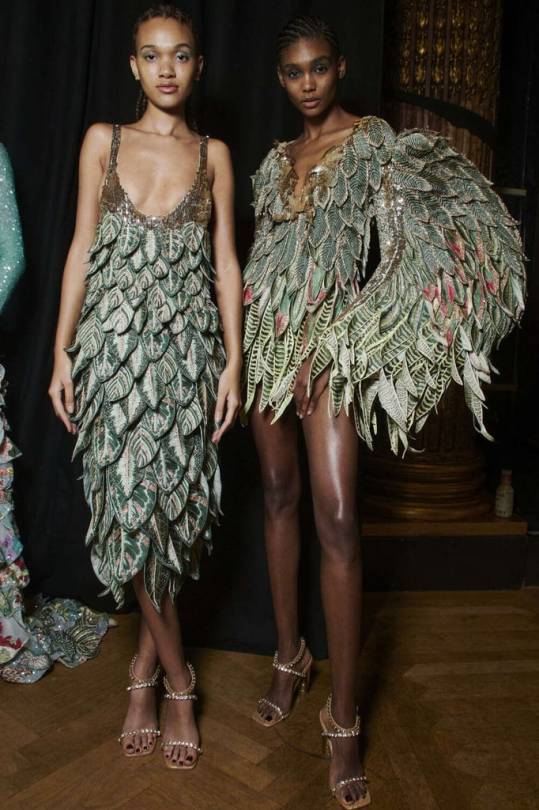
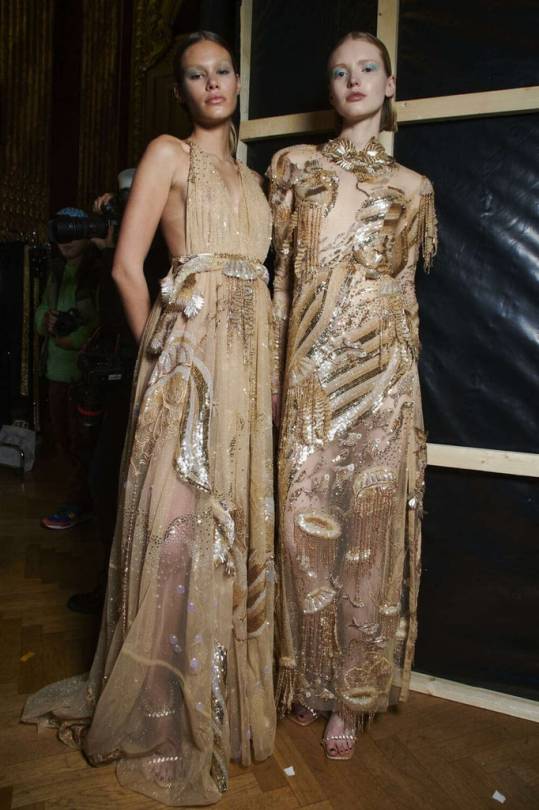

Rahul Mishra: Cosmos
SPRING-SUMMER 2023 PARIS - Haute Couture Backstage
(via Rahul Mishra)
Rahul Mishra presents the Couture spring summer 2023 collection in Paris.
Rahul Mishra’s Cosmos is a vision of physical reality founded in the utmost truth of our being—originating from the Sanskrit statement ‘Aham Brahmasmi’ which informs, ‘I am the cosmos’. It tries to understand if the world that surrounds us may be a construction of stimulations interpreted by the human brain, and if the universe within us may be a replication of the physical reality we are a minuscule part of. With this collection, we break the linearity of comprehension with inclusion of fantasy.
Realised in two and three dimensional hand embroidery complemented by elements made in hand casted recycled brass that are gold plated and encrusted with Swarovski crystals, this collection becomes our most exuberant effort at surface development. Hand crafted across villages of India, each separate generates employment for over three thousand human hours on an average. Articulated from age-old traditional Indian craft techniques, the application speaks to a global couture consumer of today. Striving to be ‘art’, while remaining ‘fashion’ the collection remains independent of trends and aspires to retain the whimsy of ‘classic’.
Each element from our ‘Cosmos’ is proudly made in India, with love, for the world.
About Rahul Mishra
Rahul Mishra, the first Indian designer to showcase at the Paris Haute Couture Week champions slow fashion with traditional Indian crafts. His eponymous label with two flagship stores in India and a thriving national and international distribution channel finds its genesis in the ideas of sustainability that present fashion as a tool to create participation and empower the local craft community of India.
The brand’s purpose defines the process. The achingly slowed down process of hand-weaving and hand embroidery allows to build sustainable livelihoods for more than 1000 artisans. Fashion critic and former International Fashion Editor of Vogue, Suzy Menkes, an avid follower of the brand’s work, regards Rahul as a “national treasure” while the late Franca Sozzani has praised him as “successfully highlighting the best and most peculiar features of his homeland.”
The design house that works on the philosophy of the 3 E’s – Environment, Employment, and Empowerment, aims to look at luxury from the lens of participation and not just consumption.
(via rain-mag.com)
#rahul mishra#haute couture#fashion week#backstage#details#embroidery#text#ilovethis#Handmade Embroidery
18 notes
·
View notes
Text
Jhumpa Lahiri’s The Lowland (2013) and Neel Mukherjee’s The Lives of Others (2014), that embody this tendency: a universalization that, in fact, neither comprehends nor sympathizes with the social and political contradictions in contemporary South Asia.
Both novels place at the center of their narrative what is commonly referred to as the Naxalite movement, which began in 1967 with a peasant uprising in Naxalbari, a village in northern Bengal near the Nepal border. Initially led by armed members of the Communist Party of India (Marxist), the movement later broke away to form the Communist Party of India (Marxist-Leninist) and has largely followed Mao’s doctrine of “people’s war.” Begun in the countryside, it spread to the cities during the 1970s, attracting significant numbers of educated, unemployed youth energized by the peasants’ struggle for rights and recognition. A brutal counteroffensive, empowered by draconian anti-terrorist laws, brought the first phase of the movement to an end. In both novels, the central figures are Naxalite militants. Their immersion in the movement, together with the fallout of their decisions on the lives of those around them, largely propels the narrative in both.
By placing an emancipatory movement at the core of their novels, Lahiri and Mukherjee also place the politics of resistance front and center. And yet, even though both novels are structured by the political actions of key characters, neither author is able to muster an empathetic understanding of their characters’ actions. Moreover, the very idea of a life of struggle is made to appear at best quaint, at worst objectionable. In both novels, politics remains something imposed on the characters, an external, impinging force—but never a source of self-actualization. Instead it serves as a source of dislocation, self-doubt, broken relationships and disrupted lives. Each novel exposes its author’s inability to perceive the political as an intrinsic aspect of the individual being.
Hence, while each of the authors locates a politics of resistance at their novel’s center and views that politics through a universalizing prism, neither can fathom its attraction. Such an approach to emancipatory politics reinforces the neoliberal view that all resistance is doomed because there are no possible alternatives to the current order. And although both authors seem to want to escape an ethos where resistance is viewed as futile, neither is able to do so. As a result, neither is able to engage, much less express, the internal lives of their own central characters. Because of this, they remain limited, not just as post-colonial novels but simply as novels.
The World In a Grain of Sand, Nivedita Majumdar (emphasis mine)
#postcolonial literature#litcrit#the central narrative of jhumpa lahiri's lowland is... killing cops is bad and will bring emotional vengeance upon you wtf#it makes her other novels look really inoffensive tbh#nivedita majumdar#diaspora lit
92 notes
·
View notes
Text
The Weight of the World
horny brain time~ (disclaimer: these are generalized cuisine stereotypes! Just horny fun for this lil au <3)
~~~
The idea that (along with genetics) people get a certain kind of chubby based on their cuisine. A certain ✨Flavour✨ of fat, if you will uwu
Uni Jungkook signs up to be part of this international relations exchange program where he gets to do a few semesters abroad, and he's going with his best friend Jimin. He's always been an admirer, and eats too much himself. The only other person that knows about his feeding kink is Jimin, who- by exposure from Jungkook- has also developed a love for the pudge in his own tummy and likes seeing pretty boys grow. They definitely feed each other's kinks. It's not all that uncommon for Jimin to flash Jungkook a grin and eye him up, and make a comment about how he's looking fatter than last month... and it sends Jungkook's bunny cheeks burning bright and his thighs trembling. He gets Jimin back with a playful slap to his hyung's dumptruck ass, and they both break into fits of laughter with half hard-ons. They have a mutual love for a few favorite streamers online, and watch together while chowing down bowls of rice and delicious meat.
Jungkook has never really thought about how- even though Jimin's weight settles in his thighs and ass first, and Jungkook's in his belly- they're both sort of... the same kind of fat. Jimin is so squeezable, all of his skin is soft and stretched, and his ass and hips wobble from the littlest touch. Jungkook's gut is the same. He's soft and fat in his middle, with a rounded waist that bulges out of his jeans and jiggles when he breathes.
On their study trip, Jungkook and Jimin can't help but... admire all of the chubby cuties that they see. And try all of the food, of course. Slowly, things start coming together. They spend a few months in America, a few in the United Kingdom, some in Europe, a couple in India and China, and three weeks in Japan before coming back home.
Jimin drags Jungkook to parties and bars despite the younger being shy and whining that he wants to just snuggle up at home and eat noodles. Jungkook notices that in America, the boys have flabby stacks of rolls that he wants to sink his hands into. He watches their newly-made friends chow on fast food and slurp gallons of soda. Jimin especially drools over the way that their guts are firm and bloated in the middle and hang heavily over their belts. Jungkook affectionately coins it the "McDonalds belly," after seeing so many university guys inhaling the greasy burgers.
Up next, they fly away from the flabby boys and land in the UK. Jungkook can't help but take up Jimin's job and drool over what his hyung calls the "potato belly." Guys with cute accents down pitchers and pitchers of thick beer. They chug dark, rich Guinness like it's water and, naturally, they need something fatty to munch with it. Jungkook gnaws on his lower lip as the university guys there inhale baskets of thick french fries called chips and practically live on potatoes. Fried fish and chips. Chips for lunch. Loaded chips. It's the go-to drunk food and devoured as a late-night snack. Jungkook wants to eat up the porky, slobby boys. Hearty wedges of greasy starch have built up in their tummies, and make them round and thick, just like the shape of a potato themselves. Boys belch and shamelessly wear their guts that push out full and demand attention, filled with fattening potatoes and beer. Jungkook has to sit on his hands to keep himself from groping them, and Jimin teases him relentlessly.
Jungkook pouts when they have to leave behind the shameless fatties, but he gets the chance to tease Jimin again as they step foot in Europe. Everyone lives on bread. So much fucking bread. Carbs for breakfast. Carbs for lunch. Carbs for dinner. Jimin gets addicted to the fluffy, sweet croissants that everyone eats for breakfast. Jungkook encourages him with glee as Jimin gains pounds of fluff right at the crest of his belly, making him even more adorably soft. His shirt sneaks up for the chub to squish out. Jungkook pinches it and makes the older squeak and tug down his shirt with flushed embarrassment and arousal. While the constant buttery pastries plump up his friend, Jungkook admires how squishy the cuties are here. Everyone munches on sandwiches that are mostly bread, and it makes them soft and curvy. Jimin and Jungkook's body types fit in best here, and they enjoy their own rounding tums as they hit up the bakery every morning. Jimin's soft cheeks puff out adorably from so many pastries.
Jungkook didn't realize that the type of food so heavily influenced how people's bodies soften out and fatten up. But they both worship the different shapes of chubbies in each country.
"Hyung... what kind of fat are we? What do we call our tummies?" Jungkook asks in Korean so know one at the restaurant will know as he brings another bite of creamy pasta to his lips. Jimin's cute chin doubles as he glances down at his own middle, squishy and round on his thick thighs as it rests in his lap- a new feat that had him whimpering and demanding for Jungkook to feel.
He giggles and touches the extra pudge. "Right now I'm growing my French buttery croissant belly... but you-" He openly ogles Jungkook and assesses him up and down, narrowing his eyes as he focuses on the way that Jungkook's tummy bulges from too much dinner. The attention makes his cheeks heat, despite being the one to ask the question. Jimin's answer warms him from the inside out. "You're pure Korean, Jungkookie. Home. Yummy and comforting. Fat on rice and tteok-bokki and spicy beef." Jimin's small hand sinks into the squishy swell of Jungkook's middle. Jimin cooes and pats his chub lovingly. Jungkook bites down on his lip to make sure he doesn't whine in public as a ripple goes through him and his belly jiggles happy and fat.
"F-fuck-" Jungkook uses the English word, and Jimin cackles, just to dig his fingers in and squeeze. He gets an ample handful. There's so much more pudge to grab than Jungkook remembers... is that new? Maybe Jimin isn't the only one who has been filling in on their 'eat the world' trip.
"Stuffed piggy~" Jimin teases in Korean. Jungkook sputters around his forkful of pasta.
Despite his teasing, they both waddle back to their shared room with bellies that are too full, stuffed and completely content.
In bed, Jungkook rubs his stomach and admires the curve beneath the blanket. His fingers sink deeply into the soft flesh. He curiously shakes, and a fat layer of warmth wobbles inside of him. Apparently he has been thickening up.
"All of this international food has been nice..." Jungkook turns his head lazily to see Jimin snuggled into his pillow like a chubby kitten.
"Mmmmm~" Jimin agrees with a sleepy nod, eyes closed.
"But- I kind of can't wait to stuff myself with real food-" Jungkook whispers into the safety of their room, imagining his belly full of hot bulgogi, comforting jijigae stew, and mouth-watering fried chicken. He moans at the thought. Heavy and filling. Just how he likes it.
"Mmmm- nothing beats home cooking, does it? I'm going eat a mountain of samgyeopsal when we get back. Gonna stuff myself until I can't move." Jimin mumbles and snuggles in deeper to his pillow.
Jungkook smiles at the thought. Both of them pinned to the couch, fat with all of their favorite dishes. It's such a warm and comforting image that it pulls Jungkook down into sleep, where he dreams of eating his way through a feast of familiar, home-cooked meals.
#oooooooops this isn't what I've found from traveling so much this year. nope. not at all. Not projecting even a lil. nope.#uwu#I love the idea of two best friends getting fatter together <3
40 notes
·
View notes
Text
Meghan, The Duchess of Sussex is a feminist, champion of human rights and gender equity, and global role model. Her lifelong advocacy for women and girls remains a constant thread she weaves through both humanitarian and business ventures. She is noted as one of the most powerful and influential women in the world, topping lists such as TIME Magazine’s Most Influential People, The Financial Times’ 25 Most Influential Women, Variety Power of Women, and British Vogue’s Vogue 25.
She and her husband, Prince Harry have also been the recipients of the NAACP President’s Award as well as the Robert F. Kennedy Ripple of Hope Award. Meghan’s global impact, and strong stance on resilience, equality, and compassion through action, have made her one of the most iconic public figures of this generation.
Born and raised in Southern California, Meghan attended Los Angeles based all-girls Catholic School, Immaculate Heart, which she continues to support as an alumna, before moving to Chicago to attend the prestigious Northwestern University. While there, she double majored in Theater and International Relations, and went on to intern at the US Embassy in Buenos Aires, Argentina, as well as to study abroad in Madrid, Spain. After graduation, Meghan turned her focus to the entertainment industry, landing her big break as a lead actor on the hit series, ‘Suits’ which she starred in for seven seasons. During her time off between filming, Meghan travelled to Rwanda, India, and across the globe working on humanitarian missions, and serving in key roles such as: UN Women’s Advocate for Women’s Political Participation and Leadership, a World Vision Global Ambassador, and a leading Counsellor to One Young World, where she inspired youth and women around the world through her passionate advocacy and hands-on approach to being of service. She also travelled to support the military community on a USO Tour, visiting six military bases in seven days including Bagram, Afghanistan.
In 2018, Meghan married Prince Harry, becoming The Duchess of Sussex.
An accomplished writer, she has contributed pieces to publications in the UK, US, and Ireland, and parlayed that skill into the creation of the successful lifestyle website, ‘The Tig’, where her thoughtful and inspiring op-eds cultivated a global fanbase. The Duchess of Sussex was the first guest editor in the history of British Vogue for their July Issue in 2019, which was the fastest selling copy in the history of the publication.
She and Prince Harry founded The Archewell Foundation in 2020 to support communities in need at a micro and macro level, in both moments of crisis as well as for long term aid. At The Archewell Foundation, they hold the value that charitable work should not simply be ‘a handout, but rather a hand held’, a phrase which Meghan first coined when supporting UK charity Smart Works, of which she is patron, that uplifts and prepares underserved women to enter the workforce. Meghan and her husband also founded and oversee production company, Archewell Productions and podcasting arm, Archewell Audio.
In 2022, Meghan launched ‘Archetypes’, a record-breaking podcast exploring the labels that try to hold women back; ‘Archetypes’ debuted at Number 1 in The US, UK, Australia, Ireland, and New Zealand, and topped the charts as the Number 1 podcast in 47 countries, demonstrating her unparalleled global reach. After its first season, Archetypes was awarded was awarded The People’s Choice Award in the podcast category.
She is a NY Times Best Selling author, publishing her highly celebrated children’s book, ‘The Bench’, and “Together: Our Community Kitchen” a publication she spearheaded with the women of the Hubb Community Kitchen in the UK, who were displaced after the tragic Grenfell Fire. True to her character, The Duchess of Sussex mobilized to turn pain into purpose, working alongside this dynamic group of women to help them heal, grow, and develop their own business enterprises in the face of adversity. In addition to topping the NY Times Bestsellers list, “Together,” also debuted as number one on the UK’s Sunday Booklist, with proceeds going to the Kitchen.
Meghan’s influence in fashion has been coined “The Meghan Effect” with items selling out within hours of her wearing them. Her ‘effect’ has transcended fashion, shifting cultural conversations as seen with her op-ed for the NY Times “The Losses We Share.” The piece detailed a heartbreaking personal loss which spiked the conversation surrounding miscarriage to the highest it had been spoken of in over two decades at the time of publishing.
Meghan is a passionate advocate for mental health and family care, the holistic support of women and children’s rights, and the immeasurable value of one’s self worth. Her core belief that representation matters, and her connection to community through the lens of learning, healing, and inspiring have helped define her as a cultural catalyst for positive change.
Meghan resides in California with her husband and their children Prince Archie Harrison and Princess Lilibet Diana, and their three dogs.
34 notes
·
View notes
Text
Analyzing the higher education sector in India
Symbiosis International (Deemed University) is a distinguished institution in India that is known for its commitment to academic excellence and global engagement in the field of higher education. It is celebrated as an international university and offers an extensive range of postgraduate (PG) and master's degree courses designed to equip students with the knowledge, skills, and perspectives required to excel in their chosen fields. In this comprehensive guide, we will explore the rich tapestry of Symbiosis International's PG and master's degree offerings, and why it is a preferred destination for higher education in India.
Symbiosis International: An Acclaimed International University in India
Symbiosis International (Deemed University) has carved a niche for itself as a premier institution that fosters academic excellence, innovation, and global citizenship. As an international university in India, Symbiosis International embraces diversity, fosters cross-cultural understanding, and provides a platform for students to engage with global issues and perspectives.
Exploring Symbiosis PG Courses
Symbiosis International offers a diverse range of PG courses spanning various disciplines, catering to the diverse interests and career aspirations of students. From management and technology to humanities and sciences, Symbiosis International's PG courses are designed to impart specialized knowledge, foster critical thinking, and equip students with practical skills that are relevant in today's competitive landscape.
Master of Business Administration (MBA): Symbiosis International's MBA program is highly regarded for its industry-aligned curriculum, experiential learning opportunities, and renowned faculty. With specializations available in areas such as finance, marketing, human resources, and operations, this program prepares students for leadership roles in diverse sectors.
Master of Technology (M.Tech): Symbiosis International's M.Tech program offers students the opportunity to specialize in cutting-edge areas of technology such as artificial intelligence, cybersecurity, data science, and more. With a focus on hands-on learning, industry collaborations, and research, this program prepares students for careers in technology-driven industries.
Master of Arts (MA): Symbiosis International's MA program provides students with a deep understanding of various disciplines such as economics, psychology, sociology, and political science. With a focus on interdisciplinary learning, research, and critical analysis, this program prepares students for careers in academia, research, and public policy.
Master's Degree Courses in India: Symbiosis International's Distinction
Symbiosis International's master's degree courses are distinguished by their academic rigor, practical relevance, and emphasis on holistic development. With a focus on experiential learning, research, and industry collaborations, these courses prepare students to tackle real-world challenges and make meaningful contributions to their respective fields.
Master of Science (M.Sc): Symbiosis International's M.Sc program offers students the opportunity to delve into specialized areas of science such as biotechnology, environmental science, chemistry, and more. With state-of-the-art laboratories, industry partnerships, and research opportunities, this program equips students with the skills and knowledge needed to excel in scientific research and innovation.
Master of Laws (LL.M): Symbiosis International's LL.M program is highly esteemed for its comprehensive curriculum, renowned faculty, and experiential learning opportunities. With specializations available in areas such as constitutional law, international law, and intellectual property law, this program prepares students for careers as legal practitioners, scholars, and policymakers.
Your Gateway to Symbiosis International
Symbiosis Centre for International Education (SCIE) serves as the gateway for international students seeking admission to Symbiosis Institute. While SCIE does not offer any courses, it plays a crucial role in facilitating admissions, providing support services, and ensuring a seamless transition for international students.
Your Journey to Excellence
Symbiosis International (Deemed University) stands as a beacon of academic excellence and innovation, offering a diverse range of PG and master's degree courses in India that prepare students to thrive in today's globalized world. With its unwavering commitment to quality education, experiential learning, and global engagement, Symbiosis International continues to shape the future leaders and change-makers of tomorrow.
#best international university in india#best ug courses in india#symbiosis pg courses#study abroad in india#study in india
0 notes
Text
Naatu Naatu–Not My Oscar Win
Much before Naatu Naatu won the Oscars for Best Song, Screen Junkies made an honest trailer for RRR. It was the first time I’d seen an Indian film—a non-Bollywood, South-Indian film at that—take up western media attention, at least on YouTube. It was a fun trailer for a fun movie; it would not be a stretch to say I enjoyed it. Then, Naatu Naatu was nominated for an Oscar. The director of the film, S.S.Rajamouli, went on Late Night with Seth Meyers, and very gently corrected the very white host when he called the film Bollywood, because it is not. The Oscars happened, Naatu Naatu won, and India—the pan-India upper-caste crowd—rejoiced for taking the global stage, never mind that “pan-India” is a contentious term that flattens out the regional diversity present in India.
As of today, there are 269 fanfics on AO3 for RRR, of which 252 are written in English. To be sure, that is more than a lot of fandoms produce on AO3 for desi media. I would not personally categorize RRR as a desi film, but it’s not not desi either. It was representation on a global stage; for a moment, the desi identity, held up against that of the Western gaze, burned bright, and a lot of desis, both in India and the diaspora, felt seen and perceived.
In her introduction to the edited essay collection, Fandom, Now in Color, Rukmini Pande talks about the ways in which race becomes an issue in fandom and fan studies only in so much as we talk about racialized media:
“…the discipline of fan studies itself has constructed a default referent for that term [fandom]—mostly white fans located in the US and UK and organized around categories like transnational and global fandom and seen to be somewhat othered by language, geographical location, or media text—K-pop fans in Brazil or fans of Star Trek in Russia, for example (Madrid-Morales and Lovric 2015; Mikhaylova 2012).” PANDE, RUKMINI. “INTRODUCTION.” IN FANDOM, NOW IN COLOR, 1-13. IOWA CITY: UNIVERSITY OF IOWA PRESS, 2020.
RRR, as a film, was a story about two freedom fighters who fought against the British rule in India—two very real freedom fighters, whom the director has admitted the film is not historically accurate about. The optics of it stand out; that, at a moment where anti-racist work seems so imminent, the award went to a song from a movie about a colonial struggle, without truly dealing with the after-effects of such a struggle on most “third-world” countries.
I don’t honestly know what connections I am drawing with this. I’ve been using Pande’s work as a way to reframe my own complex feelings about RRR winning, given the accusations of casteism S.S.Rajamouli has faced across his career, the ways in which the pan-India films have often been repackaged Bollywood, and the internal politics of South-Indian (here, specifically Telugu) identities getting melted into a singular Indian identity on a global stage with no context for the histories of these lived experiences. I’m not quite sure where I’ve arrived, but what do you think?
25 notes
·
View notes
Text
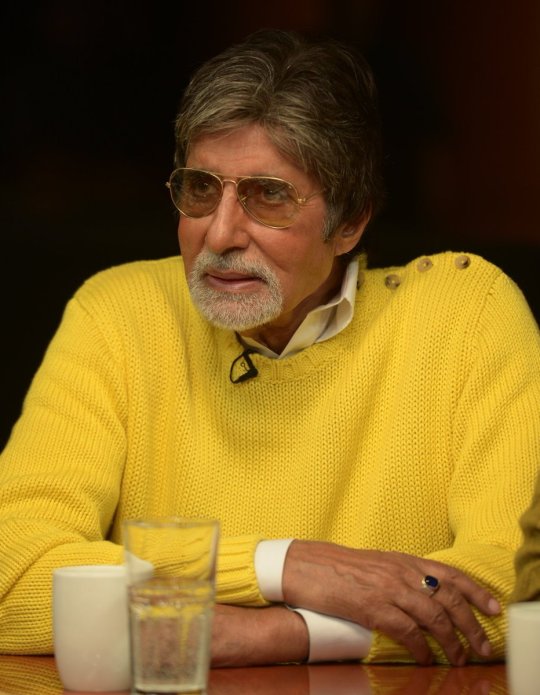
There is no one like him, or ever will be. Wishing the Shahenshah of Bollywood, Amitabh Bachchan a very Happy Birthday (11/10).
Amitabh Bachchan, born Amitabh Shrivastav on 11 October 1942, is a renowned Indian actor, producer, TV host, singer, and former politician.
With a film career spanning over 50 years, he has appeared in over 200 Hindi films. He's celebrated as one of Indian cinema's most influential figures, earning titles such as the "Shahenshah of Bollywood" and "Star of the Millennium." His cinematic dominance in the 1970s and 80s led French director François Truffaut to label him a "one-man industry."
Born in Allahabad (now Prayagraj) in 1942, Bachchan is the son of the famed Hindi poet Harivansh Rai Bachchan and social activist Teji Bachchan. He studied at Sherwood College, Nainital, and Kirori Mal College, Delhi University. His cinematic journey began in 1969, narrating for the film Bhuvan Shome. By the 1970s, roles in films like Anand, Zanjeer, and Sholay solidified his reputation as India's "angry young man." His notable films from the 70s and 80s include Amar Akbar Anthony, Don, and Shakti. After a hiatus in the 1990s, he returned to prominence in the 2000s with films like Mohabbatein, Kabhi Khushi Kabhie Gham, and Piku. In Piku, he earned his fourth National Film Award for Best Actor, a record achievement. He also featured in the Hollywood film, The Great Gatsby (2013).
Throughout his career, Bachchan has received numerous awards, including four National Film Awards for Best Actor and sixteen Filmfare Awards. Recognizing his contribution to the arts, the Indian government awarded him the Padma Shri (1984), Padma Bhushan (2001), Padma Vibhushan (2015), and the Dadasaheb Phalke Award (2018). France also honored him with its highest civilian award, Knight of the Legion of Honour, in 2007.
Apart from acting, Bachchan has been a playback singer, producer, and TV presenter. He hosted multiple seasons of India's version of "Who Wants to Be a Millionaire?" titled "Kaun Banega Crorepati." He briefly entered politics in the 1980s and is recognized for his humanitarian efforts. Beyond India, Bachchan has a significant international following, especially in regions like Africa, the Middle East, and the UK. He was voted the "greatest star of stage or screen" in a 1999 BBC poll and was dubbed the "Star of the Millennium" by TIME magazine in 2003.
11 notes
·
View notes
Text
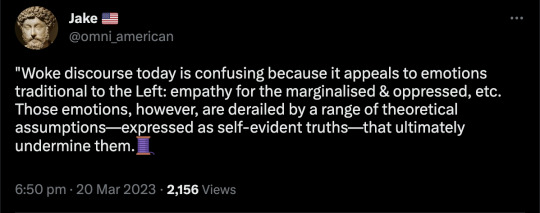




By: Susan Neiman
Published: Mar 18, 2023
It is 85 years since the great bluesman Lead Belly coined the phrase “stay woke” in “Scottsboro Boys”, a song dedicated to nine black teenagers whose execution for rapes they never committed was only prevented by years of international protests and the American Communist Party. Staying alive to injustice — what could be wrong with that? Apparently, quite a lot. In a few short decades, woke was transformed from a term of praise to a term of abuse. Still, the fact that politicians ranging from Ron DeSantis to Rishi Sunak deploy “woke” as a battle cry should not prevent us from examining its assumptions. For not only liberals, but many Leftists and socialists like me are increasingly uneasy with the form it has taken.
The woke discourse today is confusing because it appeals to emotions traditional to the Left: empathy for the marginalised, indignation at the plight of the oppressed, determination that historical wrongs can be righted. Those emotions, however, are derailed by a range of theoretical assumptions — usually expressed as self-evident truths — that ultimately undermine them.
Take a sentence the New York Times printed shortly after Biden’s election: “Despite Vice President Kamala D. Harris’s Indian roots, the Biden administration may prove less forgiving over Modi’s Hindu nationalist agenda.” If you read that quickly, you may miss the theoretical assumption: political views are determined by ethnic backgrounds. If you know nothing about contemporary India, you may miss the fact that the fiercest critics of Modi’s violent nationalism are themselves Indian.
Now, the New York Times is neither unique nor particularly leftist, but it does set standards for progressive discourse in more than one country. What concerns me most here are the ways in which contemporary voices considered to be progressive have abandoned the philosophical ideas that are central to any liberal or Left-wing standpoint: a commitment to universalism over tribalism, a firm distinction between justice and power, and a belief in the possibility of progress. All these ideas are connected. The Right may be more dangerous, but today’s Left has deprived itself of ideas we need if we hope to resist the lurch to the Right.
This Rightwards lurch is international and organised. The solidarity between them suggests that nationalist beliefs are only marginally based on the idea that Hungarians/Norwegians/Jews/Germans/Anglo-Saxons/Hindus are the best of all possible tribes. What unites them is the principle of tribalism itself: you will only truly connect with those who belong to your tribe, and you need have no deep commitments to anyone else.
It’s a bitter piece of irony that today’s Right-wing tribalists today find it easier to make common cause than those on the Left whose commitments traditionally stemmed from universalism, whether they recognise it or not. Woke discourse is confusing because so many of its goals are indeed shared by progressives everywhere. The idea of intersectionality might have emphasised the ways in which all of us have more than one identity. Instead, it led to a focus on those parts of identities which are most marginalised, and multiplied them into a forest of trauma.
Wokeness emphasises the ways in which particular groups have been denied justice, and seeks to rectify and repair the damage. But in the focus on inequalities of power, the concept of justice is often left by the wayside. Wokeness demands that nations and peoples face up to their criminal histories. But in the process, it often concludes that all history is criminal.
The concept of universalism once defined the Left; international solidarity was its watchword. This was just what distinguished it from the Right, which recognised no deep connections, and few real obligations, to anyone outside its own circle. The Left demanded that the circle encompass the globe. This was what standing Left meant: to care about striking coal miners in Wales, or Republican volunteers in Spain, or freedom fighters in South Africa. What united was not blood but conviction — first and foremost the conviction that behind all the differences of time and space which separate us, human beings are deeply connected in a wealth of ways. To say that histories and geographies affect us is trivial. To say they determine us is false.
The opposite of universalism is often called “identitarianism”, but the word is misleading, for it suggests that our identities can be reduced to, at most, two dimensions. In fact, all of us have many. As Kwame Anthony Appiah reminds us: “Until the middle of the 20th century, no one who was asked about a person’s identity would have mentioned race, sex, class, nationality, region or religion.”
The reduction of the multiple identities we all possess to race and gender isn’t about physical appearance. It’s a focus on those dimensions which experienced the most generalisable trauma. This embodies a major shift that began in the mid-20th century: the subject of history was no longer the hero but the victim. The impulse to shift our focus to the victims of history began as an act of justice. History was told by the victors, while the victims’ voices went unheard. To turn the tables and insist that the victims’ stories enter the narrative was just a part of righting old wrongs. The movement to recognise the victims of slaughter and slavery began with the best of intentions. It recognised that might and right often fail to coincide, that very bad things happen to all sorts of people, and that even when we cannot change that we are bound to record it. Yet something went wrong when we rewrote the place of the victim; the impulse that began in generosity turned downright perverse.
The limiting case of this trend is the story of Binjamin Wilkomirski, the Swiss man whose claims to have spent his childhood in a concentration camp turned out to be invented. Wilkomirski was hardly alone. In the two decades since, there has been a rash of contemporaries inventing worse histories than they experienced — a trend which runs counter to some of the heroes of postcolonial thinking, such as Frantz Fanon, whose Black Skin, White Masks proclaims: “I am not the slave of the Slavery that dehumanised my ancestors.”
Identity politics not only contract the multiple components of our identities to one: they essentialise that component over which we have the least control. I prefer the word “tribalism”, an idea which is as old as the Hebrew Bible. Tribalism is a description of the civil breakdown that occurs when people, of whatever kind, see the fundamental human difference as that between our kind and everyone else.
Universalism is now under fire on the Left because it is conflated with fake universalism: the attempt to impose certain cultures on others in the name of an abstract humanity that turns out to reflect just a dominant culture’s time, place, and interests. This happens daily in the name of corporate globalism. But let’s consider what a feat it was to make that original abstraction to humanity. Earlier assumptions were inherently particular, as earlier ideas of law were religious. The idea that one law should apply to Protestants and Catholics, Jews and Muslims, lords and peasants, simply in virtue of their common humanity is a relatively recent achievement which now shapes our assumptions so thoroughly we fail to recognise it as an achievement at all.
Let’s also consider the opposite: the Nazi legal theorist Carl Schmitt, who wrote that “whoever says the word ‘humanity’ wants to deceive you”. Instead we might say: “whoever says ‘humanity’ is making a normative claim.” To recognise someone as human is to acknowledge a dignity in them that should be honoured. It also implies that this recognition is an achievement: to see humanity in all the weird and beautiful ways it appears is a feat that demands you go beyond appearances.
Which do you find more essential: the accidents we are born with, or the principles we consider and uphold? Traditionally, it was the Right who focused on the first, and the Left who emphasised the second. This tradition has been inverted. It’s not surprising, then, that theories held by the woke undermine their empathetic emotions and emancipatory intentions. Those theories not only have strong reactionary roots; some of their authors were outright Nazis. Ideas influenced by Carl Schmitt and Martin Heidegger and their epigones take up plenty of room on the progressive syllabus. The fact that both men not only served the Nazis but defended doing so long after the war is old news. Outrage, today, is reserved for racist passages of 18th-century philosophy.
In fact, many of the theoretical assumptions which support the most admirable impulses of the woke come from the intellectual movement they most despise. The best tenets of woke, such as the insistence on viewing the world from more than one geographical perspective, come straight from the Enlightenment. Contemporary rejections of this period usually go hand in hand with not much knowledge of it. But you can’t hope to make progress by sawing at the branch you don’t know you are sitting on.
It is now an article of faith that universalism, like other Enlightenment ideas, is a sham that was designed to disguise Eurocentric views which supported colonialism. These claims are not simply ungrounded: they turn the Enlightenment upside down. Enlightenment thinkers invented the critique of Eurocentrism and were the first to attack colonialism — on the basis of universalist ideas. When contemporary postcolonial theorists rightly insist that we learn to view the world from the perspective of non-Europeans, they are echoing a tradition that goes back to 18th-century thinkers, who risked their livelihoods, and sometimes their lives, to defend those ideas.
This is not merely a historical matter: we need Enlightenment ideas if we have any hope of moving forward against what are politely called the authoritarian tendencies of the present. But there is no time for politeness when many elected leaders around the world are openly undermining democracy.
My book Left is not Woke sketches the theoretical underpinnings of much woke discourse, and argues for a return to those Enlightenment ideas which are crucial for any progressive standpoint: the commitment to universalism over tribalism, the belief in a principled distinction between justice and power, and the conviction that progress, while never inevitable, is possible. Such ideas are anathema to thinkers such as Michel Foucault, the most-cited philosopher in postcolonial studies, or Carl Schmitt.
Both rejected the idea of universal humanity and the distinction between power and justice, along with a deep scepticism towards any idea of progress. What makes them interesting to progressive thinkers today is their commitment to unmasking liberal hypocrisies. Schmitt was particularly scorching about British imperialism, and American commitment to the Monroe Doctrine; both, he argued, used pieties about humanity and civilisation to disguise naked piracy.
But Land and Sea, his book expanding these views, was published when Germany was at war with Britain and America. It’s an old Nazi trope. Schmitt wasn’t wrong that universalist claims of justice meant to restrain simple assertions of power have been abused for centuries. He concluded that unvarnished power grabs like those of the Nazis were not only legal but legitimate. You may think that’s the best we can do. Or you may go to work to narrow the gap between ideals of justice and realities of power.
As for Michel Foucault, his style was transgressive, but his vision was gloomier than any traditional conservative. You think we make progress towards practices that are kinder, more liberating, more respectful of human dignity — all goals of the Left? Look at the history of an institution or two. What seemed to be steps towards progress turn out to be more sinister forms of repression. All of them are ways in which the state extends its domination over our lives. Once you’ve seen how every step forward becomes a more subtle and powerful step towards total subjection, you’re likely to conclude that progress is illusory.
Woke activists fail to see that both these theories subvert their own goals. Without universalism there is no argument against racism, merely a bunch of tribes jockeying for power. Any by the fall of 2020 few voices defending Black Lives Matter, of whom I was initially one, were universalist. If that’s what political history comes to, there is no way to maintain a robust idea of justice, let alone coherently strive for progress.
Enlightenment thinkers, meanwhile, proclaimed that progress is (just barely) possible; their passionate engagement with the evils of their day precludes any belief that progress is assured. Still, they never stopped working towards it. As Kant argued, we cannot act morally without hope. To be clear: hope is not optimism. Hope makes no forecasts at all. Optimism is a refusal to face facts. Hope aims to change them. When the world is really in peril, optimism is obscene. Yet one thing can be predicted with absolute certainty: if we succumb to the seduction of pessimism, the world as we know it is lost.
You need not study philosophical debates about the relations between theory and practice to know at least this: what you think is possible determines the framework in which you act. If you think it’s impossible to distinguish truth from narrative, you won’t bother to try. If you think it’s impossible to act on anything other than self-interest, whether genetic, individual or tribal, you will have no qualms about doing the same.
It is often recalled that the Nazis came to power through democratic elections, but they never won a majority until they had already grasped power. Had the Left-wing parties been willing to form a united front, as thinkers from Einstein to Trotsky urged, the world could have been spared its worst war. The differences dividing the parties were real; blood had even been spilled. But though the Stalinist Communist Party couldn’t see it, those differences paled next to the difference between universal Leftist movements and the tribal visions of fascism.
We cannot afford a similar mistake.
==
left wing | ˌlef(t) ˈwiNG |
noun (the left wing)
1 the section of a political party or system that advocates for
greater social and economic equality, and typically favors
socially liberal ideas; the liberal or progressive group or section.
When you're more left than the Left, but they call you the Right.
-
Many activists on the identitarian left, in other words, share far more ideological common ground with the far right than they would care to admit. Both factions repudiate John Stuart Mill’s principle that ‘the individual is sovereign’ in favour of group identity; both are openly hostile to free speech and, irrespective of intentions, both are responsible for creating the conditions within which the far right can flourish. That said, to refer to the Critical Social Justice movement as the ‘identitarian left’ would be to accept their claim to be in any meaningful sense ‘left wing’. The new puritans have eschewed the traditional socialist goals of redressing economic inequality and redistributing wealth and replaced them with an obsessive focus on race, gender and sexuality. These are deemed to be the source of all disparities in power, in spite of the obvious truth that privilege is most commonly determined by money, class, heredity and nepotism.
-- Andrew Doyle, "The New Puritans"
Woke beliefs of invisible power dynamics and postmodern social constructivist philosophy originate from, and are propagated by, some of the most privileged academic elites on the planet.
They have the time, the resources and the ennui to spend on luxury beliefs about numinous supernatural demons woven into the fabric of society and the pretentious French philosophy that claims to hunt down the demons and exorcise them with magic spells of discourse and redefining words. These are not the concerns of people who need to worry about keeping food on the table and affording medicines this month.
They've completely abandoned their traditional constituency - the working class, those who don't have degrees in shallow luxury beliefs, those who have pragmatic concerns rather than academic hypotheticals and $10-word snobbery.
#Susan Neiman#omni american#woke#wokeness as religion#cult of woke#wokeness#wokeism#left wing#snobbery#religion is a mental illness
22 notes
·
View notes
Text
The principal news items on Russian state television this evening were the reception Vladimir Putin was given by Chinese President Xi Jinping in Beijing and the succession of meetings that he had with other heads of state who are participating in the 10th anniversary celebrations of China’s Belt and Road Initiative.
You won’t find a word about the Russian President’s visit to Beijing in this evening’s online New York Times, but the paper’s editorial board is slow to post news about Putin, probably waiting for the State Department to suggest the proper ‘spin.’ However, The Financial Times online gives Putin ‘front page’ coverage in two articles: one is an overview of his scheduled meetings and the other focuses on his talks with one leader in particular, prime minister Viktor Orban of Hungary.
Let us stop for a moment to consider what the FT wants us to know about Putin in Beijing. And after that we can come back to the Russian coverage, which not only casts a different light on what you read in FT but provides a good deal more factual information to take in.
*****
In keeping with its regular propagandistic journalism, the FT cannot print an article about Putin without reminding its readers what a pariah he is, a man pursued by international courts, a man who is isolated and weak. The title itself already sets the tone: “Vladimir Putin visits Beijing for first time since Russia’s invasion of Ukraine.”
Yes, they concede in the first paragraph that he arrived in China “for a high-level meeting with Chinese leader Xi Jinping,” but then take the air out of that by saying it was the Kremlin which described Putin as the ‘main guest’ at the event, not their own reporter on the ground in Beijing.
Two lines down we read: “The Russian leader cut back his foreign travel after the war in Ukraine began and until last week had not left the country since a war crimes indictment from the International Criminal Court in March.” We are reminded that Putin skipped the G20 meetings in Indonesia and in India in September.
Thus, almost half the article is spent telling us about where Putin has not traveled to and nothing about this visit to Beijing.
Moving on, the authors speak about how “Russia had become increasingly dependent on China as an economic lifeline” ever since the launch of its Special Military Operation and imposition of sanctions by the West. This is a quote from a former political adviser at the European parliament who is now with a university in Taiwan. The same expert completes the downgrading of Russia by explaining that it is the ‘junior partner’ in the relationship with China.
After kicking the tires of the Belt and Road Initiative in general for having to renegotiate or write off $79 billion in bad loans, the authors give us four lines at the end that actually contain some news, of which I quote two below:
“Putin met Hungary’s prime minister Viktor Orban and Vietnamese president Vo Van Thuong on Tuesday, ahead of further meetings with Thai, Mongolian and Laotian leaders.”
The space allotted to the close-up photo of Putin and Xi smiling complacently to one another at the head of the article is six times bigger than the actual news in the text of the article.
The separate article “Orban meets Putin in bid to ‘save everything possible’ in bilateral relations” might be said to be marginally better journalism though the same Max Seddon in Riga is a co-author of both. The editors have done their best to spoil everything by giving it the subtitle “European head is first western leader to meet Russian president since issue of war crimes warrant for his arrest.” Once again the big photo of Orban and Putin, clasping hands at their meeting, tells more than the text.
There are some of the same general reminders here of Putin’s alleged isolation and pariah status, but they are given more force by a quotation from the U.S. ambassador to Hungary condemning the meeting: “…Orban chooses to stand with a man whose forces are responsible for crimes against humanity in Ukraine…”
The only neutral remarks in the article catalog the common business interests of Russia and Hungary, including natural gas supply and a nuclear power plant under construction by Rosatom.
*****
Russian television news support the view that Putin is the main guest at the BRI gathering in Beijing by videos showing the entry of the participants to the state banquet this evening: the procession is led by Putin and Xi side by side. Just behind them is Xi’s wife and Kazakhstan president Tokaev. The several dozen others follow behind. Similarly in the video of all the leaders lined up for their group photo, Putin and Xi are together in the very center chatting to one another. Questions anyone about who is who, and what is what?
Perhaps the Russians go overboard in stressing the great demand of other participants for one-on-one time with Putin at the large residence which the Chinese made available for holding these tête-à-têtes in discrete luxury. Pavel Zarubin, the host of the Sunday evening program Moskva, Kremlin, Putin is a master at showing off details like the line of limousines of leaders waiting outside for their time in the sun with Putin.
Aside from footage from the meeting with Orban, Russian television presented to viewers the public part of Putin’s meeting with the president of Laos, who opened the conversation speaking passable if heavily accented Russian. As we learned, he was studying at Leningrad University during the same years as Putin, though in a different department. The Vietnamese president also made reference to studies in the Soviet Union in their opening remarks for the cameras. His talks with Putin were likely about energy first of all since Gazprom is fairly active in the country. Gazprom chairman Alexei Miller is in the Russian delegation. As for the meeting that Putin had with the interim president of Pakistan, who is an English speaker, we know that they discussed energy projects and deliveries of more than a million tons of Russian grain to Pakistan, presumably paid for in yuan. With the Mongolian president, Vesti tells us they discussed a new gas pipeline which apparently is intended to supply Mongolia itself and not only serve as a transit route to China.
However, from the Russian perspective these side meetings with other BRI Forum participants are small beer. What they are awaiting with great anticipation is the several hours tomorrow that Putin and Xi will spend one-on-one and then are joined by their respective delegations. We know that the situation in the Middle East is at the top of their agenda, with a secondary focus on the Ukraine war and remaining time devoted to further development of economic ties.
The one tantalizing tidbit that Russian news (Sixty Minutes) threw out to viewers is that whereas Putin returns to Moscow tomorrow evening, Foreign Minister Lavrov flies to North Korea for a meeting with Kim.
©Gilbert Doctorow, 2023
#gilbert doctorow#vladimir putin#xi jinping#new york times#us propaganda#BRICS#belt and road initiative
12 notes
·
View notes